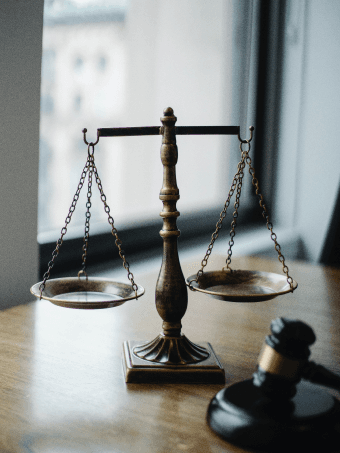Trademark is a sign capable of distinguishing the goods or services of one company from the goods or services of other companies. The main purpose of a trademark is to distinguish the company’s goods and services from those of its competitors, offering a considerable level of legal protection against infringement attempts. Trademark registration is a key step in protecting the company’s intellectual property rights.
When someone files a trademark application with the USPTO, the application is published for opposition, which means that any interested party can file an opposition to the registration of the trademark. On average, oppositions are raised in approximately 5% of the new applications. The opposition can be filed on various grounds, such as likelihood of confusion with an existing trademark, genericness, or descriptiveness. The Notice of Opposition is the formal legal document that sets out the grounds for the opposition and the facts and legal arguments supporting the opposition. The party filing the Notice of Opposition is known as the Opposer, and the party seeking to register the trademark is known as the Applicant.
The principal reason for raising an opposition revolves around the perceived similarity between the previously registered trademark and the new application which could potentially damage the owner’s reputation and create consumer confusion. The time and cost of opposition procedures varies greatly between different countries. Learn more about the difference in average estimated procedure time and fees for trademark opposition in the United Kingdom, United States, European Union, and China.
Potential challenges of receiving trademark opposition
By choosing not to register a trademark and doing business by the use and promotion of your business names and logos, you could be unknowingly infringing on another trader’s registered trademark without even realizing it. This could have an expensive and detrimental effect on your entire business. If the trademark owner is able to prove infringement, company accused of trademark infringement is likely to receive any of the following:
a court order to stop using the accused trademark;
an order requiring the destruction or confiscation of products including the accused
trademark; an order for monetary relief, including defendant's profits, any damages sustained by the trademark owner, and the costs of the action;
an order that the defendant, in certain cases, pay the plaintiffs' attorneys' fees.
Moreover, registration of an identical or a similar trademark by a competitor may result in a cease and desist action taken against the entrepreneur. In the absence of a registered trademark, rebranding may become the only feasible option, resulting in substantial losses incurred in virtually re-starting the whole business.
How to respond to a trademark opposition?
If you receive a trademark opposition complaint in the US, you should respond promptly and carefully, as failure to respond could result in a default judgment against you. Here are the general steps to follow:
Read the Notice of Opposition and understand the grounds for opposition and the claims being made against your trademark application.
Determine whether you will defend your trademark application or abandon it. If you choose to defend your trademark, you will need to respond to the opposition within the required time frame (the applicant will have 40 days to provide an answer to the opposition).
Consult with a trademark attorney to evaluate the strength of the opposition and to help you prepare a response. A trademark attorney can advise you on the best course of action, and can help you draft a well-reasoned and persuasive response.
File your response with the Trademark Trial and Appeal Board (TTAB) and serve a copy on the Opposer. The response should address each of the claims made in the opposition, and should provide evidence and legal arguments in support of your trademark application.
Once the opposition is received, the applicant can choose whether or not they wish to address the opposition (either via an agreement or in a legal proceeding) or whether they wish to abandon the trademark application (and lose all fees paid to the USPTO). The best approach for addressing an opposition really depends on the specific circumstances but based on our experience, there are three general approaches that can be taken:
Limit the selection of goods & services in trademark application: This ensures that the two brands do not overlap in the products / services offered to the consumers and hence their perceived similarity is not a real problem
Sign a co-existence agreement: There are numerous co-existence agreements in place between similarly sounding brands, clarifying the extent to which they can utilise their trademarks in specific contexts and countries
Challenge the opposition: When it comes to renown brands in particular, even a minor similarity of the new trademark application to the established brand can result in an opposition. In numerous cases, such oppositions can be successfully challenged as they lack a sufficient merit that the co-existence of these two brands would result in consumer confusion since both brands operate in completely different industry sectors
Responding to a trademark opposition can be a complex and time-consuming process. Working with an experienced trademark attorney can help you navigate the process and increase your chances of success. The success rate of dealing with an opposition varies based on the risk profile for individual trademark applications. This is why Trama starts with a free lawyer’s check, providing a transparent assessment of the chances for a successful registration of a given trademark for each client.


